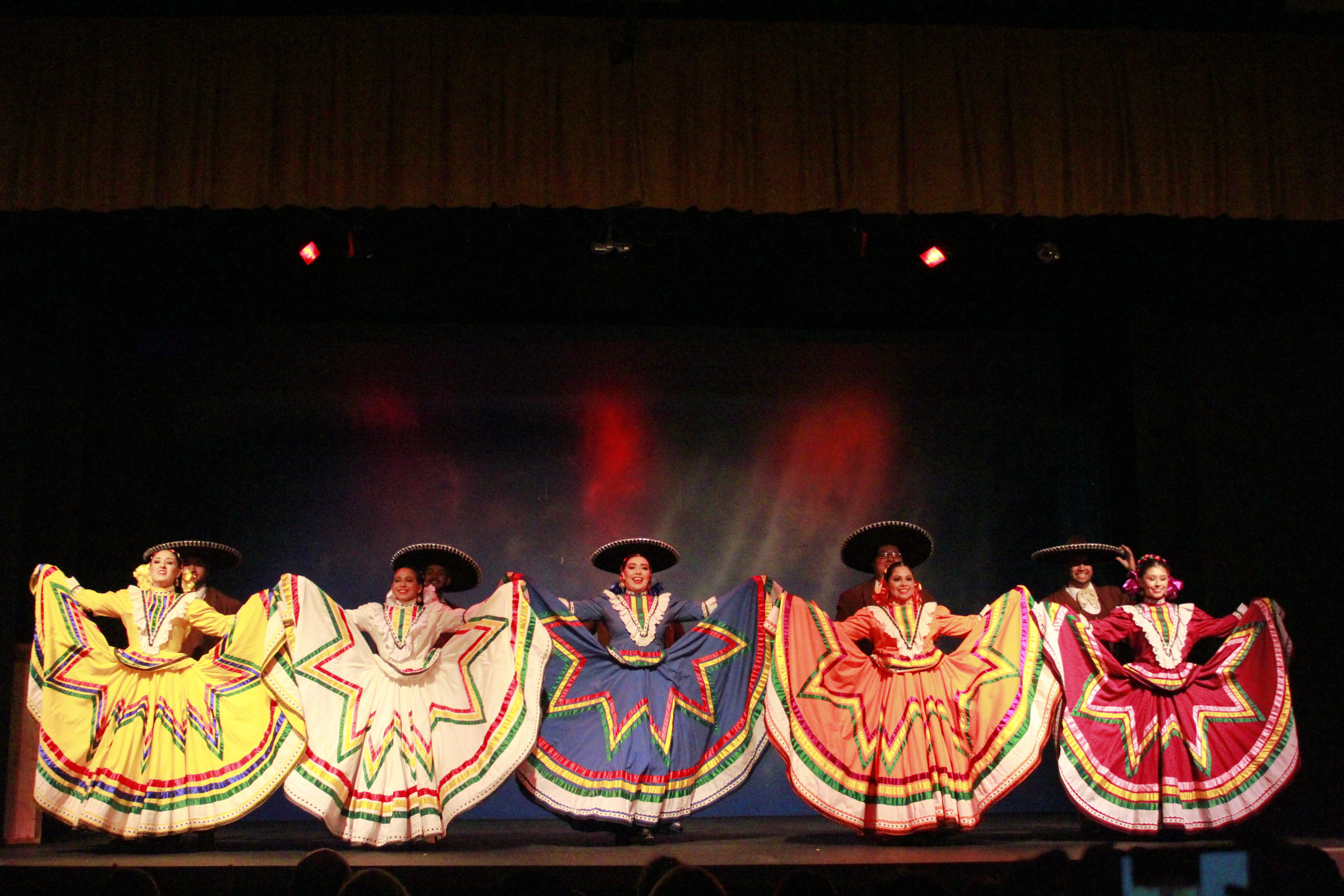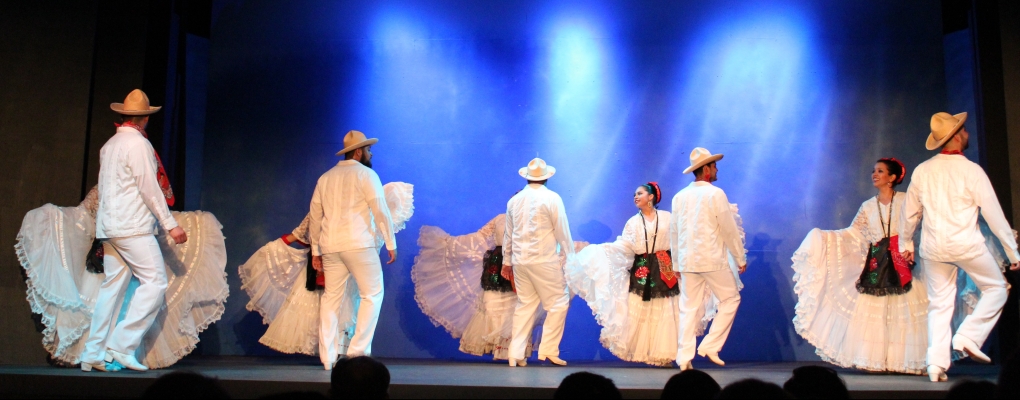I feel that I am always learning more and more about our folklorico dances. I am constantly reading, asking questions, and thinking about new ideas. Very often I am shook (as my teenage daughters would say) when I come across a new finding. Here, are a few folklorico findings that shook me!
Theoretical Principle
First off, I like to bring academic theory into our conversations around folklorico dance. In my previous blog called Folklorico Dance as an Invented Tradition, I talk about how oftentimes we think that all the folklorico dances that we perform have a long history. In reality, they are recent creations. Eric Hobsbawn in his classic text “Inventing Traditions” (1983) coins this term to refer to “traditions actually invented, constructed and formally instituted and those emerging in a less easily traceable manner within a brief and date-able period-a matter of a few years perhaps- and establishing themselves with great rapidity (1).” He notes that these invented traditions are practices with a given set of rules, rituals, that are repeated and that are thought to have a long history but in actuality are very recent (1). Many of our Mexican folklorico costumes, music, and dances fall under this definition of invented traditions. In my writing, today I continue this thought by adding a few more folklorico facts that really support Hobsbawn’s theory of Invented Traditions.
- Invention of the Huapangos Tamualipecos
In the summer of 2018, I attended the Asociacion Nacional de Grupos Folkloricos Conference in Phoenix, Arizona. I took a Tamualipas dance workshop with María Teresa Montelongo Ortíz. She gave presentation before the entire membership and told us that the huapango dances of Tamualipas were invented. (Surprise!!)
She said that they were created by Raúl Pazzi Sequera (national grand champion winner Huapango Veracruzano) and Moisés Rodríguez (former dancer with the Ballet Folklórico de Amalia Hernádez). Both men traveled to Tamualipas and created the distinctive footwork sequences that would come to represent the huapangos of Tamualipas. Then, alongside the Conjunto Típico Tamaulipeco which was the official musical group of Tamualipas, they traveled all across the country teaching the dances of the son huapango to the rhythm of the jarana (Montelongo Ortíz 26). Thus, these dances were an invented tradition created for the stage.
- Stylization of the Ranchera costume

I always thought that the ranchera costume of Jalisco had evolved from the outfits worn by women during the Colonial era. Low and behold, as I am reading through my materials I find out that this is partly true. The costume did evolve through time but the style that we wear today was created by Josefina Gómez and Maria Del Refugio García Brambila also affectionately known as Miss Cuca.[i] They both designed this costume using oral histories, personal experiences, and a bit of artistic creativity. This is the story behind the ranchera costume. One day Miss Cuca ran out of espiguilla so instead she bought ribbons to adorn a costume she was sewing. She discovered that the ribbons really complimented the dress. Plus, the ribbons accentuated the movement of the skirt so that it was really highly visible (Chávez Rodríguez 51). This would become the Ranchera dress that we know of today.
- Innovations in Veracruz Dancing
Many of the zapateado sequences that I had always thought were derived from the Jarochoas/os of Veracruz as they danced during their festivals, were in fact created for the stage by Mario Cabrera Salgado. According to the video Mario Cabrera “El Jaquetón,” Cabrera invented 54 jarocho steps which we use today in our dances. He also was the first person to use white botines when he danced Veracruz. Not only that but he changed the cotton palecate and used a long one made out of satin. He also changed the hat to a more durable one that would withstand our zapateados. Such creative innovations in dance that we still continue to this day.
My Thoughts: These are just three examples of the ways in which folklorico dances were invented for the stage during the 20th century. What other folklorico dances are invented traditions?
Works Cited
Chávez Rodriguez. Asociación Nacional de Grupos Folklóricos Congreso.46-52. July. 2002, Riverside, California.
Hobsbawn, Eric and Terence Ranger, Eds. The Invention of Tradition. Cambridge: Cambridge UP, 1983.
“Mario Cabrera: El Jaquetón,” https://www.youtube.com/watch?v=hWF7zrMBnKI
Montelongo Ortíz,María Teresa. Asociación Nacional de Grupos Folklóricos Congreso. 26-27. July. 2018, Phoenix, Arizona.
—-.—-. “ Huapangos Tamualipecos” (lecture, Asociación Nacional de
Grupos Folklóricos, Phoenix Arizona, July 2018).
[i] In “Ballet Folklórico Mexicana: Choreographing National Identity in a Transnational Context, Olga Nájera-Ramírez interviews Rafael Zamarripa Artistic Director of the Ballet Folklórico de la Universidad de Colima. He was as one of Miss Cuca’s former students. He says that Miss Cuca earned a degree in Physical Education. She also taught dance at Beatriz Hernández Boarding School. Her dancers would win national titles. She taught at many schools. Her dance group at the Escuela Normal or Teacher’s College was designated the official state representative of Jalisco.
Photos courtesy of Gabriela Mendoza-Garcia. Video footage taken from You Tube.
Copyright, 11/24/2019, Mendoza-Garcia

Gabriela Mendoza-García Ph.D. is an Artist and Scholar. She has her own dance school and company called the Gabriela Mendoza-García Ballet Folklórico in Laredo, Texas. Dr. Mendoza-Garcia founded this group in 2013 and teaches children and adults of all ages. Her company consists of seasoned folklórico dancers with years of experience performing this art form. She teaches traditional Mexican folklórico dance pieces, as well as, works that are inspired by her scholarly research. Her scholarship includes: Dancing throughout Mexican History (1325-1910), History & Folklore booklet with an accompanying documentary sponsored by the Webb County Heritage Foundation, The Jarabe Tapatío: Imagining Race, Nation, Class and Gender in 1920s Mexico published by Oxford University Press, an on-line blog, writings for Asociación Nacional de Grupos Folklóricos, and others.



3 thoughts on “3 Folklorico Findings that Shook Me (Surprised)”